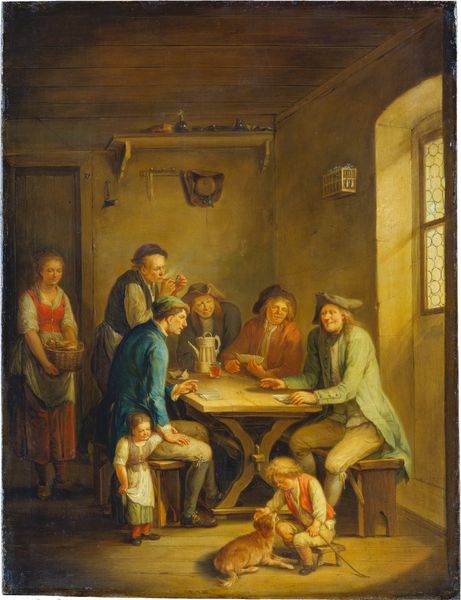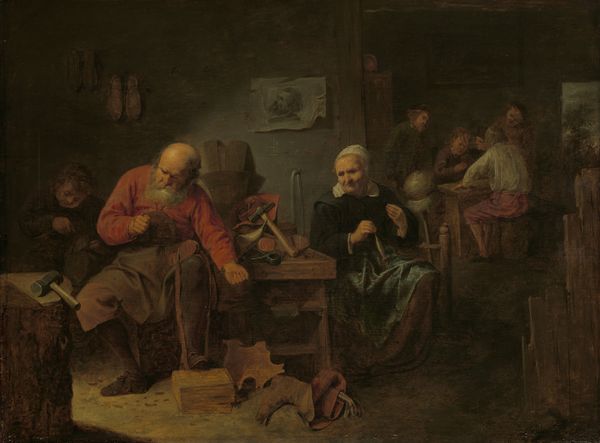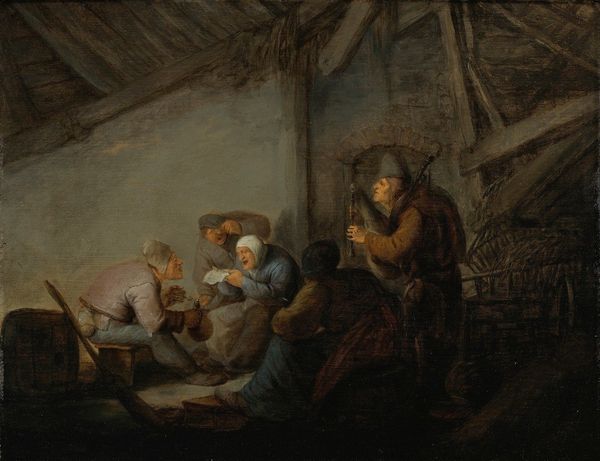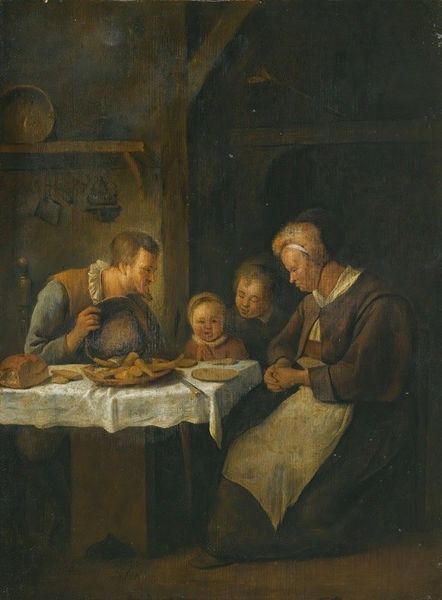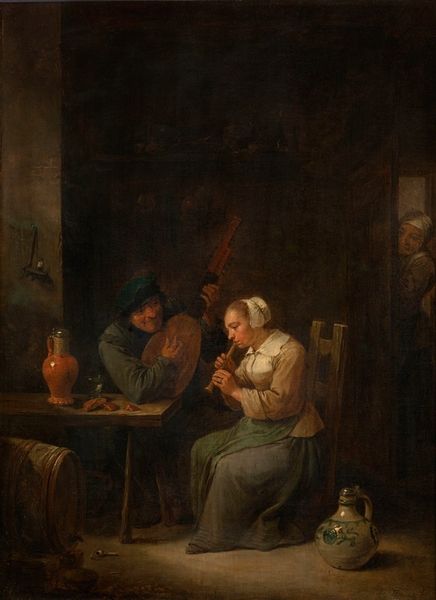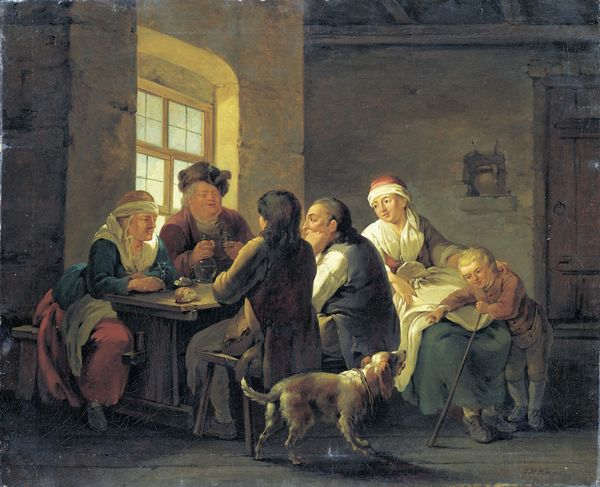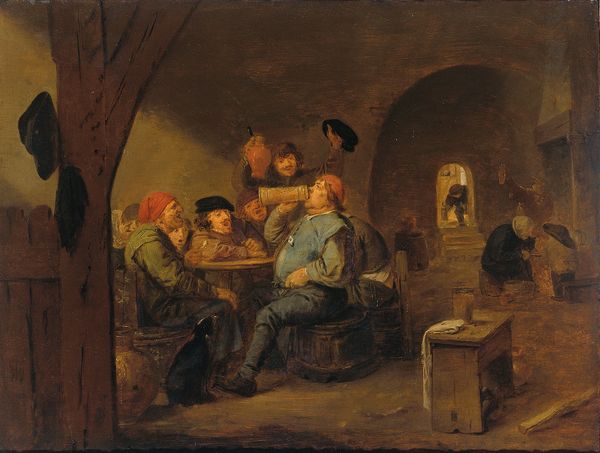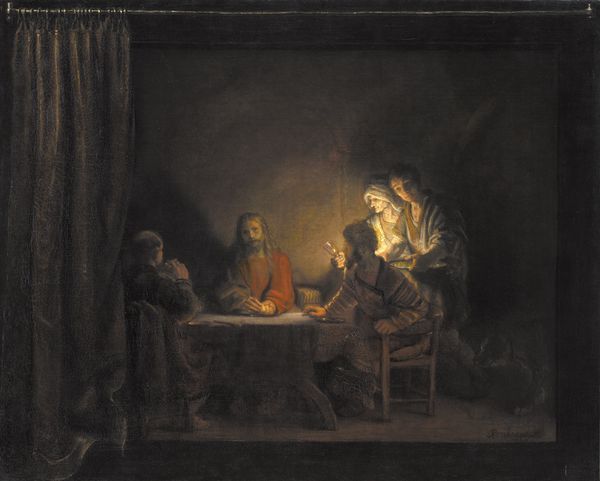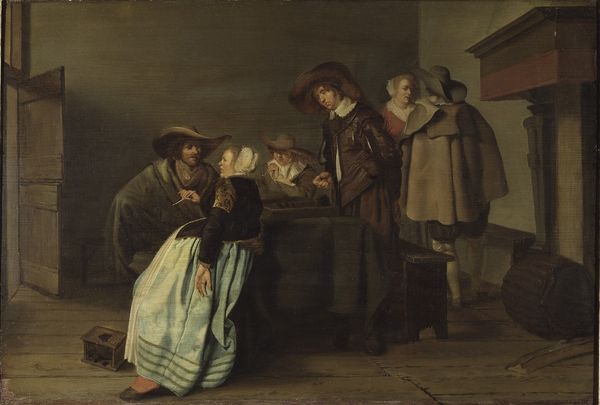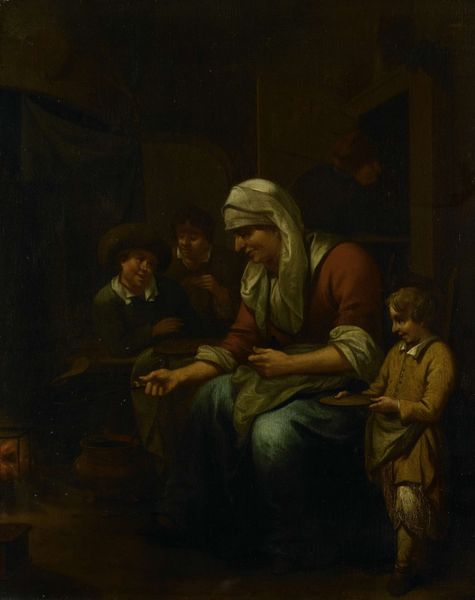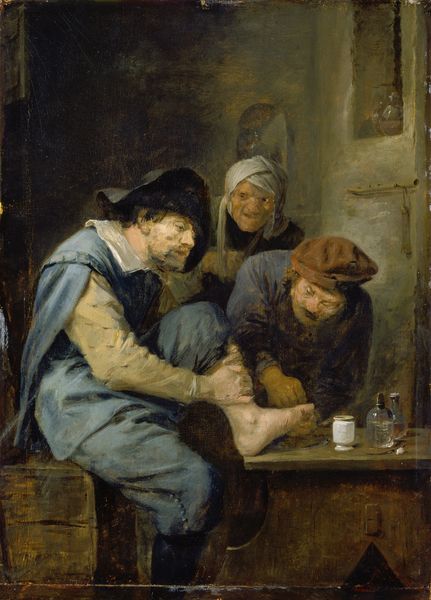
oil-paint
#
portrait
#
dutch-golden-age
#
oil-paint
#
oil painting
#
underpainting
#
genre-painting
#
realism
Copyright: Public domain
Curator: Look at this depiction of communal piety in Jan Miense Molenaer's 1668 oil painting, "The Prayer Before Meal," currently residing at the Rijksmuseum. What strikes you immediately? Editor: The sheer ordinariness of the scene, but rendered with such sombre intensity. It’s dim, the colours are muted… a deep reverence. I feel a kind of quiet dignity emanating from this ordinary family at table. Curator: The choice of setting is interesting, isn’t it? The humble interior and working-class people signal shifts away from depictions of purely noble or wealthy families. This genre scene reflects broader social changes and the rise of the middle class in the Dutch Golden Age. There is a social narrative at play here, beyond its piety. Editor: Yes, and notice how the visual elements amplify that. The light seems to emanate from the centre, from the very hands clasped in prayer. These gestures of prayer, almost codified, give a spiritual authority to this family unit that exists outside formal religious spaces. The communal gesture is so central, quite literally. Curator: Consider also, how Molenaer uses realism here. It challenges ideals of beauty by portraying the subjects as they are. Look closely—these are not idealized people. This reinforces the themes of accessibility and universal spirituality, right? It is as though religious experiences belonged to everyone, and were no longer confined to wealthy benefactors commissioning art in churches. Editor: It’s remarkable how symbols work across time, too. While this family may be unaware of the impact they make for future viewers, those folded hands signal shared humanity and devotion. They also function on a historical level, providing insight into their way of life and values through gestures that retain symbolic strength across time and cultural shifts. It captures a slice of daily life, elevated by this shared moment of thankfulness. Curator: The rise of these genre paintings created an increased interest in representations of domestic life and offered a narrative focused on more universal lived experiences in 17th century Netherlands. Editor: Molenaer’s work gives us a moving look at humanity. Through visual tools of iconography we become linked to subjects of an oil painting executed centuries ago. Curator: Through his masterful use of light and form, as well as the realistic portrayal of subjects and attention to subtle but important social undercurrents, Jan Miense Molenaer really does deliver more than just a pretty picture.
Comments
No comments
Be the first to comment and join the conversation on the ultimate creative platform.

